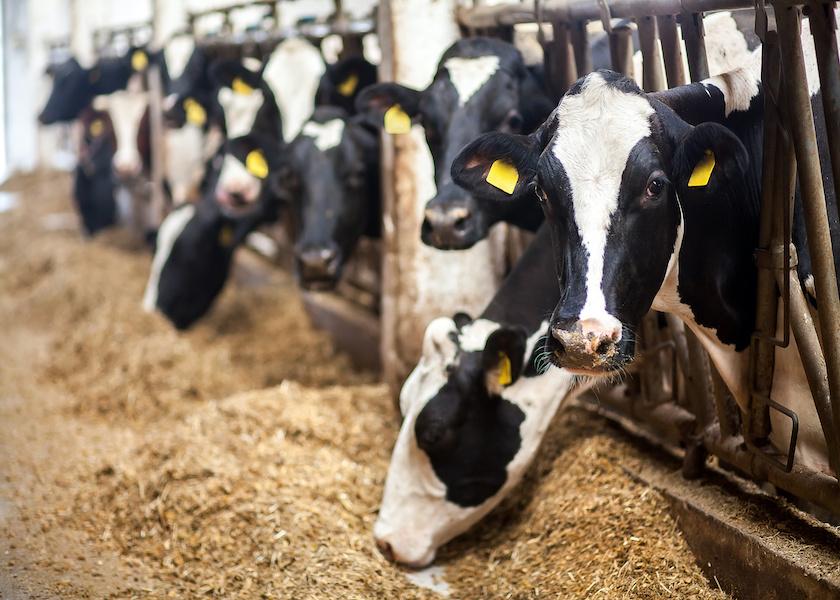No TMR? No Problem (Maybe)

Feeding cows using a total mixed ration (TMR) has become an almost-universal standard in commercial dairying in the United States.
But a more traditional approach to feeding ration elements separately could help address concerns related to overhead costs, labor shortages, and fuel usage, according to a group of Argentine researchers.
The team, led by researcher Maria Cuffia of National University of Litoral, Esperanza, Argentina, published the results of their recent study in the Italian Journal of Animal Science. They compared the performance of 32 relatively high-producing, early lactation Holstein cows, with half (16) being fed a TMR, and half receiving a more simplified program fed in separate elements.
Both diets were identical in total formulation, which was based on a 1,350-pound cow producing about 70 pounds of milk per day with 3.5% milk fat and 3.0% true protein. The TMR group received a total of 53 pounds of dry matter (DM) per cow per day, which allowed for 5-10% refusals to ensure ad-lib feeding. The TMR composition on a DM basis was 42% concentrate, 32% corn silage, and 26% alfalfa hay. This ration was fed twice daily, with feedings 8 hours apart.
The non-TMR ration was comprised of the same feed components, but delivered separately. Those elements were a pelleted concentrate feed in the milking parlor; free-choice hay; and corn silage fed straight from the bag with holes cut into the plastic. An electric fence was placed at about 1 foot around the perimeter of the silo bag to keep cows from stepping on or lying in it.
After an experimental transition period of 1 month, production performance was monitored weekly for 3 weeks. The results included:
- No significant difference was observed between the two groups in terms of milk production, fat and protein yield, total energy intake, total dry matter intake, body weight, body condition score, plasma metabolites, and eating and ruminating time.
- Cows in the non-TMR group had higher non-fibrous carbohydrate intake, lower intakes of crude protein and neutral detergent fiber (NDF), and longer water-drinking time than the TMR group.
- Cows in the TMR group showed more competitive feeding behavior.
- The non-TMR group showed a more stable pattern for both eating and drinking.
The researchers suggested that, given the fact that production was not affected, a non-TMR approach could help limit a herd’s investment in specialized machinery; reduce labor time and expense; and cut back on fossil fuel use.
They noted, however, that other studies have shown TMR feeding to be more favorable for milk production compared to feeding separate components. This was especially true when concentrates were increased to about 60% of the total ration, compared to about 40% in this study.
Also, the direct feeding of silage straight from the bag, as modeled in this experiment, may not be feasible in many herds.
Still, they said a simpler feeding system could be a beneficial, low-input option for some herds -- provided the costs of feeding operations truly are reduced – and may cater to cows’ natural instincts. The animals may seek the feed and water they want, instead of what is presented to them, with the cow determining the final diet.
“Ruminants possess a degree of nutritional wisdom in the sense they can select feeds according to their needs,” the authors stated. “This does not mean that animals always select a balanced diet.”







